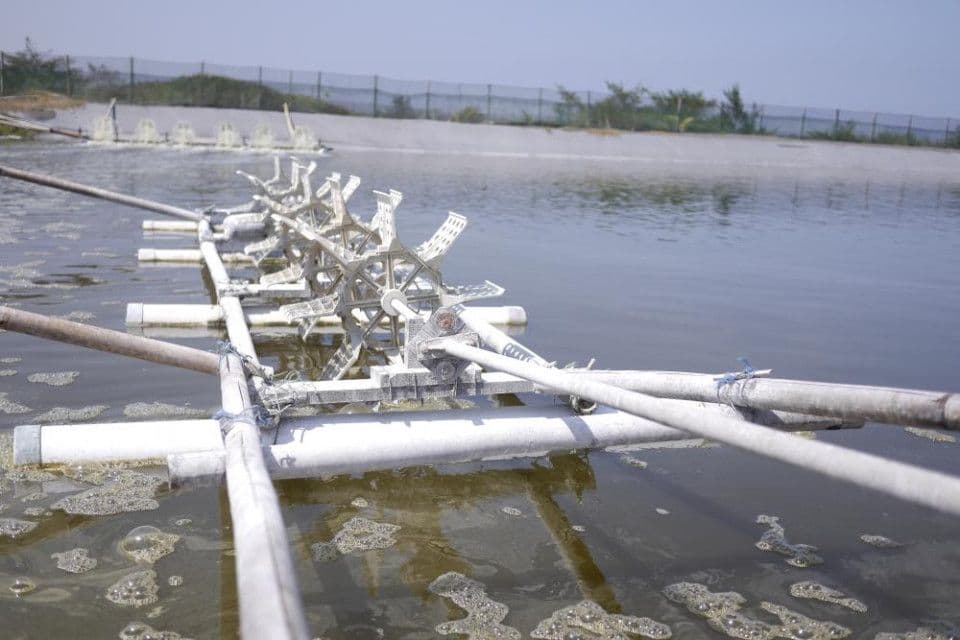
Shrimp farming without growing the plankton will cause problems in the future. Plankton has an important role in shrimp farming. So that before stocking the PL, plankton should be grown enough in pond. There are many ways to grow and maintain a certain amount of plankton during shrimp farming. Here are some suggestions that you can do:
- Do the liming using CaCO3 or dolomite lime (CaMg(CO3)2) in the morning
Lime added to pond waters is not directly utilized by plankton, but increases the alkalinity of pond waters so that nitrifying bacteria can convert ammonia (NH3) into nitrate (NO3) which can be utilized by plankton. The recommended dose of adding lime for every stocking is 10 ppm, with the time of spreading lime in the morning. - Add nitrifying bacteria as needed
Nitrifying bacteria play a role in growing plankton but their excessive use can cause problems in aquaculture. The problems that arise are in the form of fast plankton growth, and low dissolved oxygen at night. So that the addition of nitrifying bacteria needs to be limited by the dose and time of use. The recommended dose is 0.3 - 0.5 ppm once a week and the time of stocking is in the morning. - Filling the pond on the morning
In a saturated pond, adding water in the morning can increase the volume of pond water. As the volume of water in aquaculture ponds increases, the amount of plankton increases. The water that enters the pond contains minerals that plankton can use to grow. However, overfilling of water can disrupt the ecosystem in pond waters. So that it is necessary to pay attention to filling water into the pond, it is recommended that the filling of water in one day is a maximum of 5 cm from the initial height and carried out in the morning. - Adding a fermentation product
To grow plankton, it can be done by adding fermented products to the culture pond water. Many materials can be used for fermenting materials such as bran, bran, molasses, and so on. Fermentation products stocked into ponds can increase nitrite in ponds and increase C element in waters that are utilized by nitrifying bacteria.
The suggestions above can be considered to grow and maintaining the amount of plankton in the shrimp pond.
Written by:
Endra Arif Wicaksono - Jala





